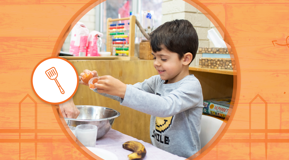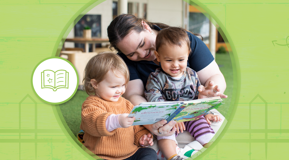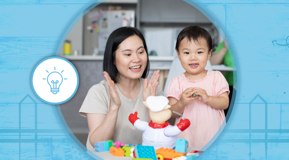Feelings bingo – visualise emotions

Let's play bingo! Identify and understand different emotions through this fun game of bingo, which you can easily create at home.
Skills and benefits:
- Identifying emotions and emotional regulation
- Problem-solving
- Language, communication and social skills
What you’ll need:
- Paper
- Pens/texters/crayons
- Scissors
- 20 x tokens (5c and 10c coins work well)
-
Printed photographs of family and friends in duplicate
What to do:
- Draw a grid on your page, dividing the page into 9 equal sized squares.
- Draw a face in each square which represents a different emotion – you can leave the one in the middle blank if you choose and it becomes a wildcard, which you can cover with a token at the beginning of each round.
- While making the bingo cards, talk to your child about what emotions may be used in the game; what different emotions/feelings do they know of? What does a person’s face look like when they feel that way?
- On the second sheet of paper do the same as above but make sure the different emotions are in different squares (so the game cards aren’t the same).
- Cut the third piece of paper into 9 equal squares and draw a different emotion face on each square (matching the ones you have drawn on the game card) and place those in a pile face down.
- To play, each player has a game card. One of the players, or a third player, takes the top emotions card from the face-down pile and turns it over. If players have the same emotion shown on the card on their own game card then they place a token on that face on their card. This process is repeated until one player has a line (horizontal, vertical or diagonal) of tokens. When this occurs that player says “bingo!” and has won the round.










